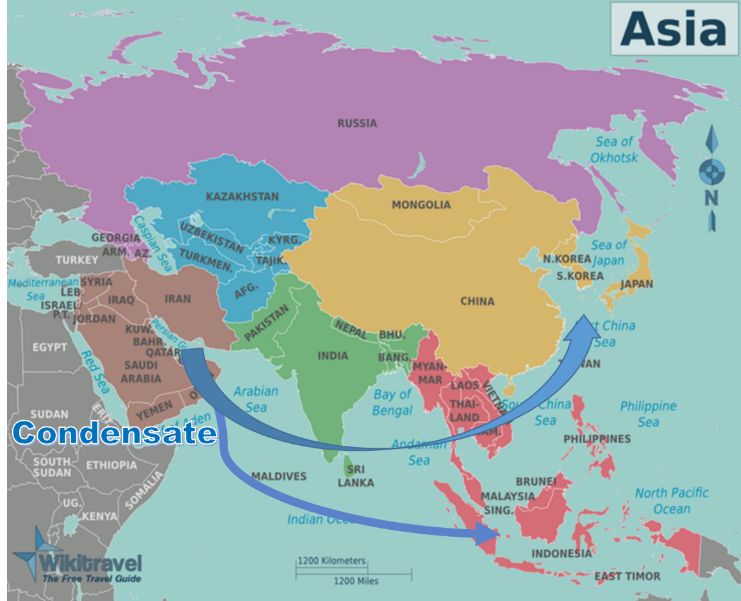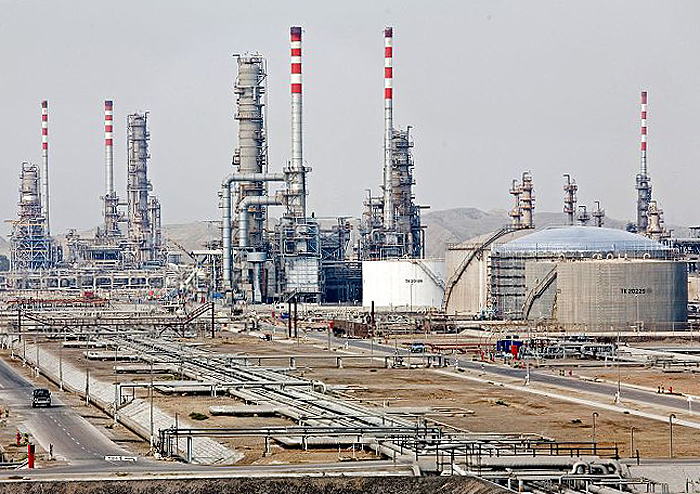South Pars/North Dome is one of the largest independent gas reservoirs in the world lying on the territorial border between Iran and Qatar in the Persian Gulf. As this gas field is a common field between Iran and Qatar, both countries tend to have a maximum production from this field.
Under each condition, in gas field exploiting, condensate production is an inevitable fact. So, it is necessary to make a plan for consuming, converting or exporting all components of the extracted rich gas including propane and butane (or LPG), as well as gas condensate.
Most of the time, condensate prices are determined by the condensate production rate as a function of rich gas production, that means, when condensate storage tanks are full; it must be sold at whatever price, which mostly obtainable by buyer. Therefore, like most gas producers, a domestic market for the gas condensate must be created. In fact, natural gas producers have tried to make a domestic consumer for their condensate production by developing condensate splitters to produce LPG, naphtha and gas oil and consequently constructing the olefins and aromatics plants in downstream.
For this reason, development of the Iranian Persian Gulf Star Refinery with a capacity of 360,000 barrels of gas condensate per day was defined in 2006 and it is finally fully launched on Feb 2019. Moreover, Siraf Gas Condensate Refineries with the capacity of 480,000 barrels per day (bpd) was defined as one of the government priority projects in 2017. On the other hand, Qatar converted part of its gas condensate, at the Ras Laffan refinery, in to LPG, naphtha, jet fuel and gas oil and export the rest to the markets. Note that by operation of the Laffan Gas Condensate Refinery (phase 2) in 2016, 146,000 bpd of condensate was removed from the market. Total Qatari condensates production is now estimated by 900 thousand barrels per day and will not change significantly by the end of the decade. This shows that both countries tend to make a domestic consumer for their condensate production. Moreover, UAE has plans to construct a new condensate processing train, which will increase the capacity from the current 140,000 to 210,000 bpd. Consequently, the export of gas condensates from Persian Gulf will be reduced significantly in the next three years.
In such a situation, what will happen for the condensate splitters in the East and Southeast Asia? Is there another reliable source to supply gas condensate?
Naphtha as an Alternative!?
Many petrochemical producers in the Asian region currently consume unprocessed condensate from Iran and Qatar, which is processed in regional condensate splitters into naphtha for use as petrochemical feedstock, e.g., Qatar and Iran have been the largest condensate suppliers to South Korea, according to tanker tracking data. The impact of the construction of several large new condensate splitters in these exporting markets – i.e. the Siraf refineries and Persian Gulf Star projects in Iran, and the existing Ras Laffan facility in Qatar – will be to significantly reduce the availability of unprocessed condensate for export to these consuming markets. Instead, Iran and Qatar will be able to process their condensate resources within their own territories, and sell the resulting, higher value, product such naphtha to the same consumers. The project’s rationale is that these consumers are likely to continue to source their feedstock supplies from Iran and Qatar, rather than seek out new unprocessed condensate suppliers. Between them, Iran and Qatar represent a very significant proportion of global natural gas reserves, and consequently gas condensate production, potentially limiting the ability of consumers to source alternative supplies.

So as a possible scenario, the naphtha which will be produced by Persian Gulf splitters can be introduced as the main alternatives of condensate for the feedstocks of some olefin and aromatic plants in the East and Southeast Asia.
Reza Hosseini
Energy Economics Expert
[This topic was presented by author at Platts 2nd Annual Gasoline, Naphtha & LPG Conference, November 6-7, 2017, Rotterdam, Netherland.]


Your Comment